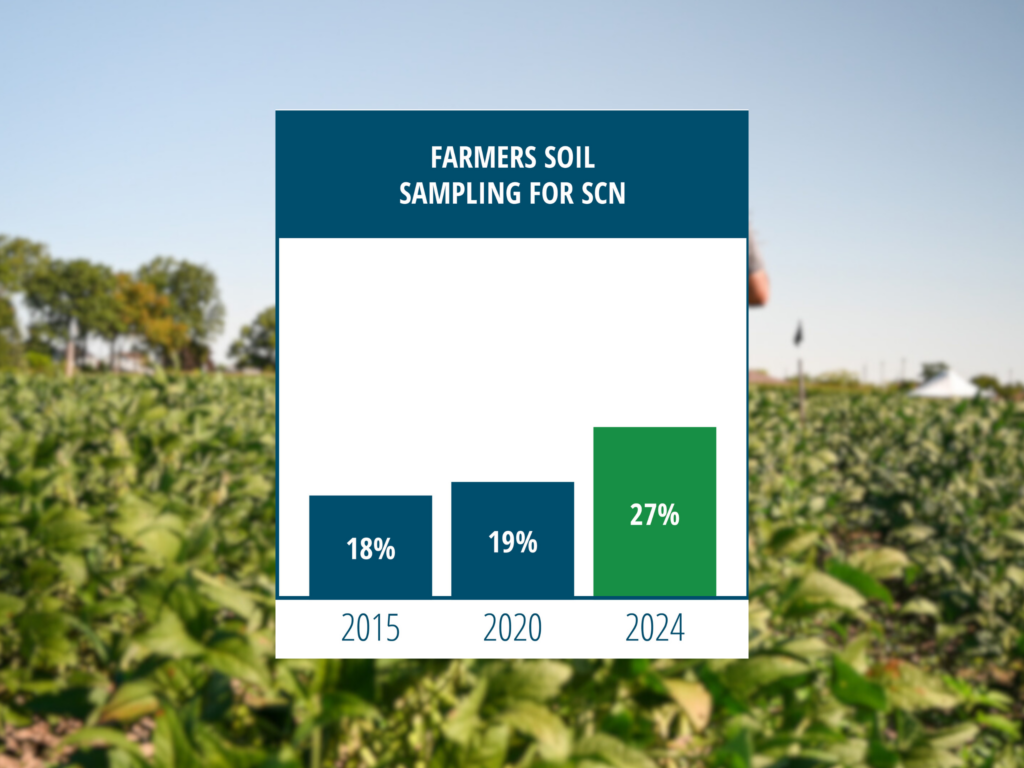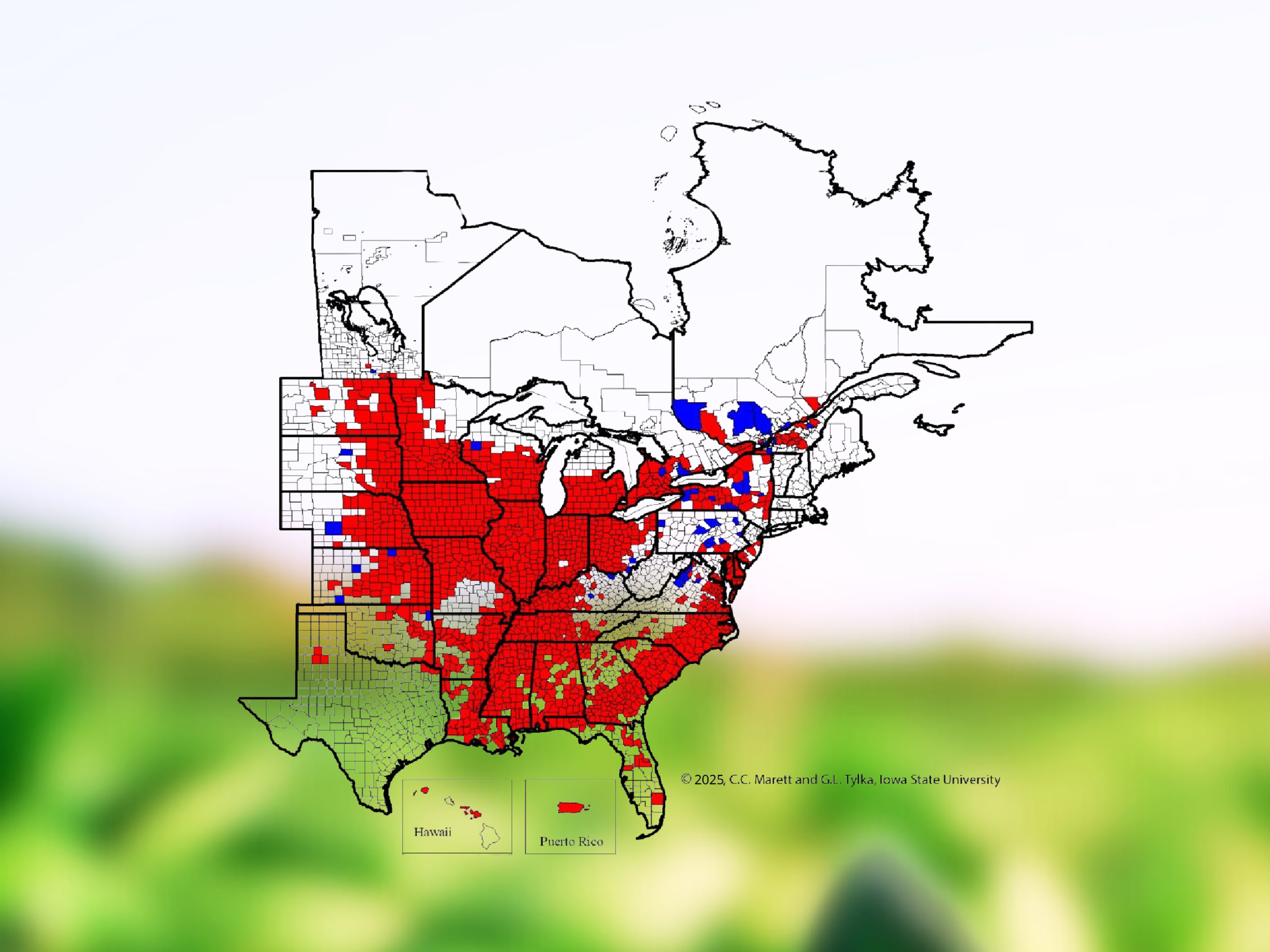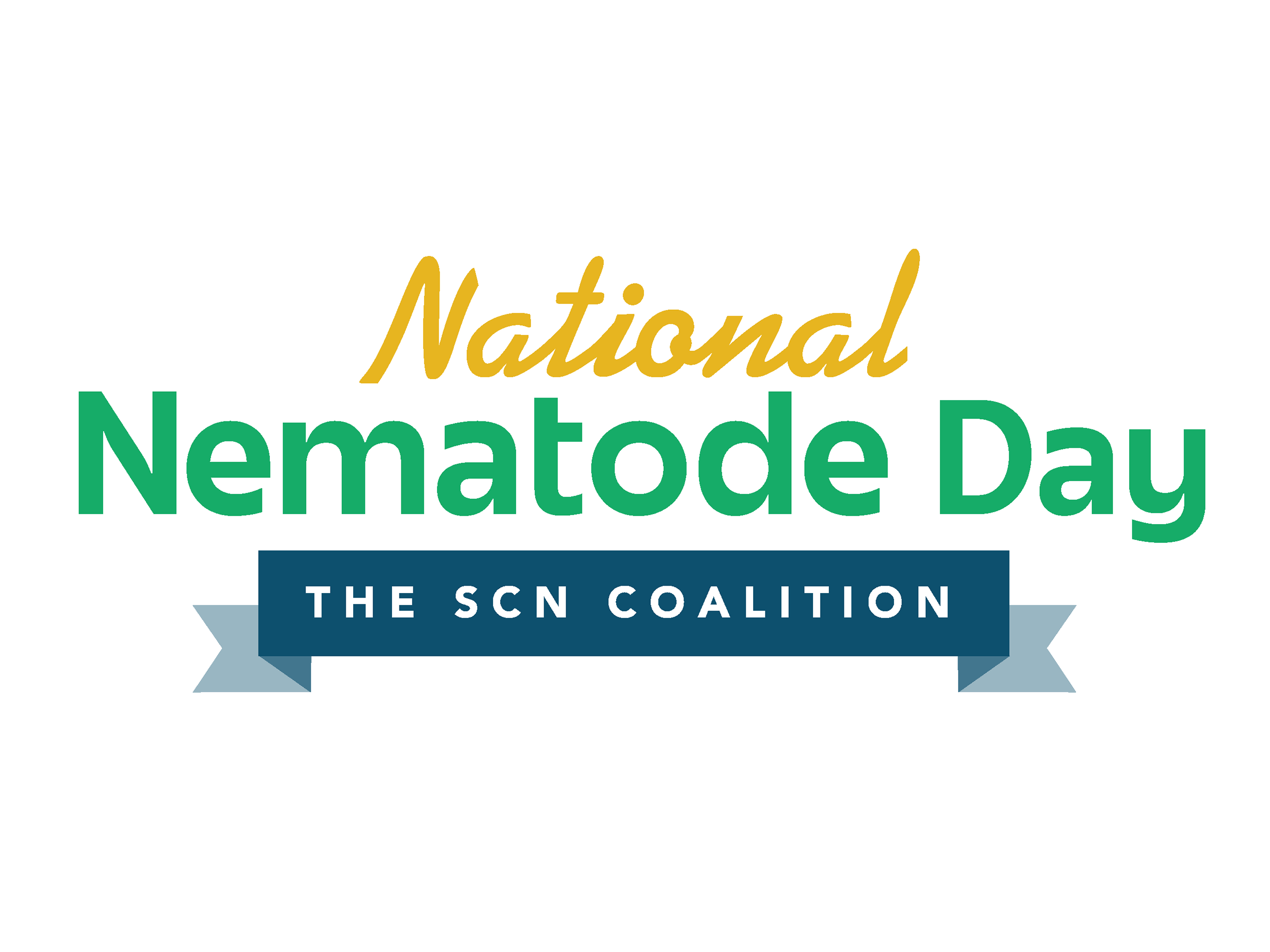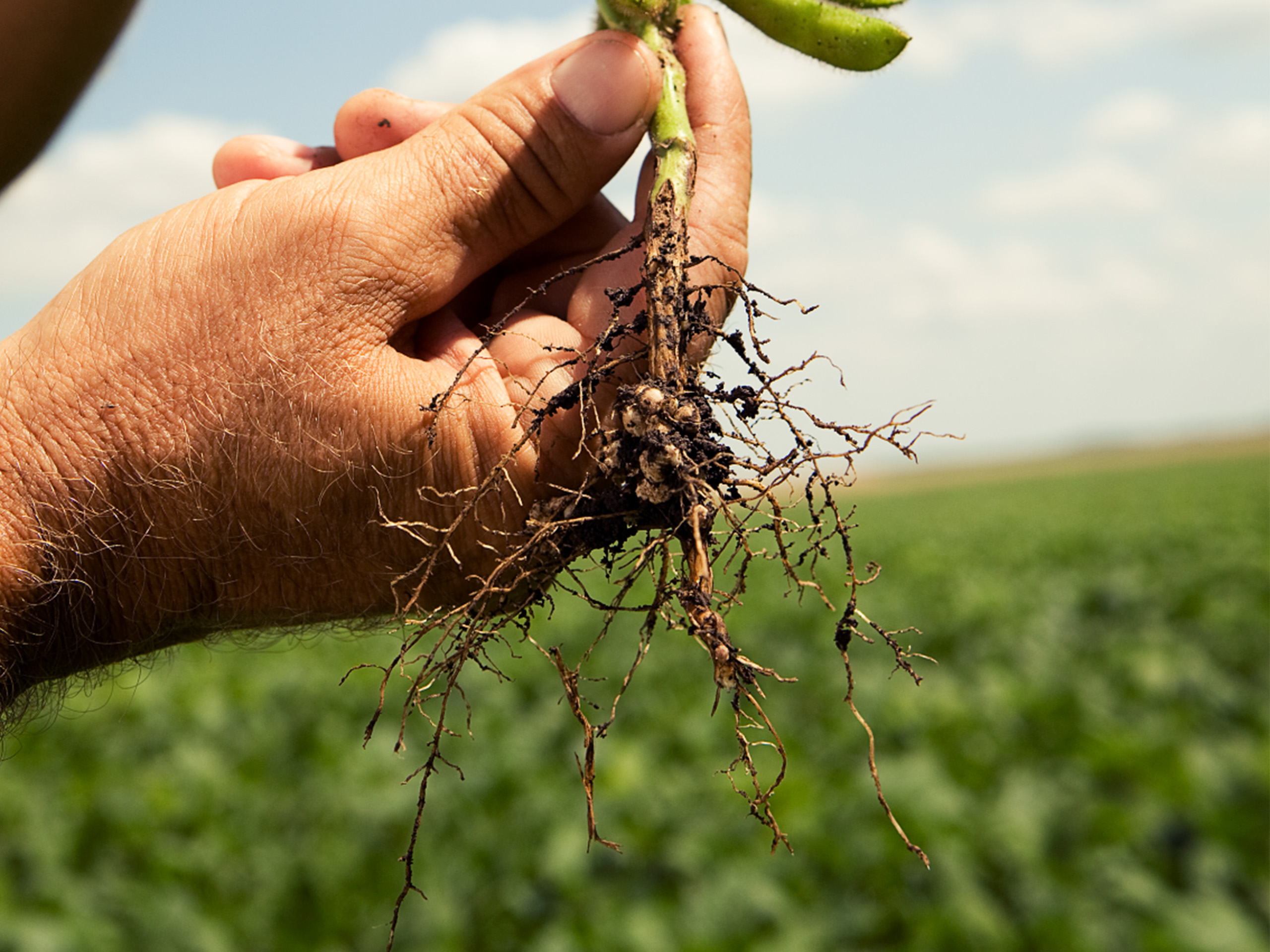
In the last 10 years, quantitative research funded by the United Soybean Board (USB) reveals The SCN Coalition increased awareness and adoption of active soybean cyst nematode (SCN) management, resulting in up to 20% more soybean farmers actively managing SCN.
Since its conception in 1997, The SCN Coalition has strived to increase farmer awareness of SCN — the No. 1 yield-grabbing pathogen of the soybean crop in North America — and increase the number of soybean farmers actively managing the pest to protect the sustainability of the soybean industry.
More soybean farmers ignited to actively manage SCN
With the overuse of PI 88788, used in 95% of SCN-resistant soybean varieties, SCN resistance has increased and so has the need to diversify sources of genetic SCN resistance and management strategies.
The 2024 study found:
- 27% of farmers said they were soil sampling for SCN, a 50% rise since 2015.
- 56% of farmers said they were rotating sources of genetic SCN resistance, a 43% increase since 2015.
- 27% of farmers identified Peking as a source of SCN resistance, an 80% increase since 2015.
- 42% of farmers said they use a nematode-protectant seed treatment, an 80% increase since 2015.
This is considerable growth, says USB Director and Arkansas soybean farmer Robert Petter, who also is the Health & Nutrition Supply Work Group Chair. “The study is proving that this effort between public and private partners to disseminate this message to farmers is working,” Petter says. “The SCN Coalition and their partners are helping elicit change in the soybean industry at a rapid pace.”
Rising farmer perception of SCN yield loss
Along with growth in farmer awareness and active management, the perceived yield loss of SCN also increased. In 2020, farmers surveyed thought SCN reduced soybean yield by 5.1 bushels per acre. In 2024, this perception rose to 5.4 bushels per acre.

While this signals increased awareness of the SCN resistance problem, it also demonstrates a lack of understanding of the larger impact this pest can have on soybean yields.
Data from 15 years of variety trials in farmers’ fields in Iowa reveals SCN’s increased reproduction on PI 88788 can decrease yield by as much as 14 bushels per acre, which represents a 23% yield loss.1
“While we’re seeing more farmers better understand this pest and invest in protecting their soybean crop, our work is not complete,” says North Central Soybean Research Program Executive Director Ed Anderson. “We’re continuing to identify new resistance genes, strategies and tools that can provide soybean farmers longer-term solutions.”
Innovative agronomic tools define pest’s financial toll
In tandem with public and private partners, The SCN Coalition used data collected from 25,000-plus university research plots with SCN-resistant soybeans to create a simple way for farmers to develop an active SCN management plan — the SCN Profit Checker.
Putting the pest on center stage, the SCN Profit Checker uses the farmer’s field information to provide a customized estimate of the pest’s yield and profit loss. Since its launch in 2023, the SCN Profit Checker has calculated yield loss for thousands of farmers. Surveyed farmers who were aware of the calculator estimated their average yield loss at 19% — equating to a $70 per acre loss.
University of Nebraska Plant Pathologist Dylan Mangel emphasizes the importance of equipping soybean farmers with the research and tools they need to succeed. “With research-backed tools like the SCN Profit Checker, more farmers are aware of their soil conditions and are actively managing SCN than seasons before,” he said.
Horacio Lopez-Nicora, Ohio State University soybean nematologist, says the impact of The SCN Coalition on the soybean industry is staggering. “Depending on the level of SCN reproduction occurring on resistant soybean varieties in farmers’ fields, up to 23% more yield may have been recouped by actively managing SCN,” he says. “That translates into tens of thousands of farmers, millions of acres and hundreds of millions of dollars back into farmers’ pockets.”
Visit TheSCNCoalition.com to learn more about actively managing SCN and to get recommendations specific to your state provided by university and extension experts.
References
1McCarville, M.T., Marett, C.C., Mullaney, M.P., Gebhart, G.D., Tylka, G.L. Increase in soybean cyst nematode virulence and reproduction on resistant soybean varieties in Iowa from 2001 to 2015 and the effects on soybean yields. Plant Health Progress. 2017. 18(3):146-155.



